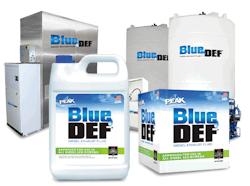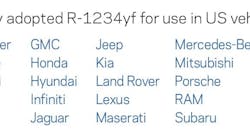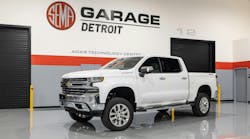As Diesel Exhaust Fluid (DEF) has become a mandatory commodity for all fleet managers running 2010 EPA-compliant engines, many still have questions about how it impacts day-to-day operations.
In an August 2013 online survey of the trucking industry, Peak Commercial & Industrial, the makers of BlueDEF, found that the top concern of those surveyed was how DEF with SCR technology impact overall fuel economy.
Respondents were provided the following choices and asked to rank their top concerns with DEF usage:
- Performance in freezing temperatures
- Effect on fuel economy
- Additional cost to overall maintenance budget
- Proper storage
- Ease of accessibility (finding it when you need it)
- Contamination (using the right accessories)
Not surprisingly, fuel economy ranked number one with the highest overall ranking, followed by added maintenance costs and performance in freezing temperatures. Dr. Frank Cook, senior vice president of new product development with Peak Commercial & Industrial explains more about the fuel efficiency side of DEF:
"With the use of DEF with SCR technology, the engine can be tuned to run at optimal conditions, which gives a more complete fuel burn and better fuel economy," said Cook.
Understanding there are questions about the trade-off of additional DEF cost versus fuel saved, Cook provided this breakdown:
- If you get better fuel economy as a result of SCR engines and save 3 percent, that would be 3 gallons of diesel at $4.00 a gallon for every 100 gallons of fuel (about $12 saved)
- At a 3 percent treat rate you would use 3 gallons of DEF for that same 100 gallons of fuel (about $8.37 spent)
- Since DEF is less than the cost of diesel, operating costs are actually lower. For every dollar spent on DEF, it is about 40-50 cents less you are spending on diesel fuel, which is a solid return rate.
Cook added that you typically only have to fill your DEF tank once every 6,000 miles, which can be via truck stop pumps, company storage containers or retail containers.
"We've been supplying functional fluids to major companies worldwide for years under our well-known Peak brand, so when DEF came along, we made sure that our customers were well supported with this new product," said Cook. "We have 99.3 percent on-time delivery rates for all of our products and are one of the top DEF suppliers in the industry."


